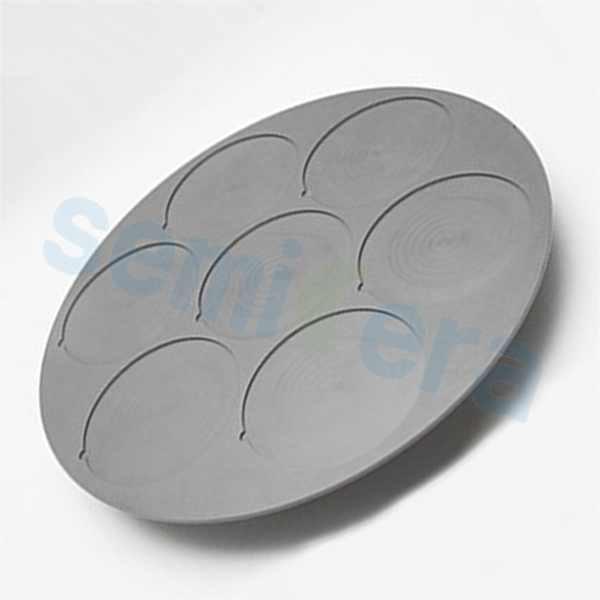In today's field of electronic technology, semiconductor materials play a crucial role. Among them, silicon carbide (SiC) as a wide band gap semiconductor material, with its excellent performance advantages, such as high breakdown electric field, high saturation speed, high thermal conductivity, etc., is gradually becoming the focus of researchers and engineers. The silicon carbide epitaxial disk, as an important part of it, has shown great application potential.
Ⅰ、epitaxial disk performance: full advantages
1. Ultra-high breakdown electric field: compared with traditional silicon materials, the breakdown electric field of silicon carbide is more than 10 times. This means that under the same voltage conditions, electronic devices using silicon carbide epitaxial disks can withstand higher currents, thereby creating high-voltage, high-frequency, high-power electronic devices.
2. High-speed saturation speed: the saturation speed of silicon carbide is more than 2 times that of silicon. Operating at high temperature and high speed, the silicon carbide epitaxial disk performs better, which significantly improves the stability and reliability of electronic devices.
3. High efficiency thermal conductivity: the thermal conductivity of silicon carbide is more than 3 times that of silicon. This feature allows electronic devices to better dissipate heat during continuous high-power operation, thereby preventing overheating and improving device safety.
4. Excellent chemical stability: in extreme environments such as high temperature, high pressure and strong radiation, the performance of silicon carbide is still stable as before. This feature enables the silicon carbide epitaxial disk to maintain excellent performance in the face of complex environments.
Ⅱ、manufacturing process: carefully carved
The main processes for manufacturing SIC epitaxial disk include physical vapor deposition (PVD), chemical vapor deposition (CVD) and epitaxial growth. Each of these processes has its own characteristics and requires precise control of various parameters to achieve the best results.
1. PVD process: By evaporation or sputtering and other methods, the SiC target is deposited on the substrate to form a film. The film prepared by this method has high purity and good crystallinity, but the production speed is relatively slow.
2. CVD process: By cracking the silicon carbide source gas at high temperature, it is deposited on the substrate to form a thin film. The thickness and uniformity of the film prepared by this method are controllable, but the purity and crystallinity are poor.
3. Epitaxial growth: growth of SiC epitaxial layer on monocrystalline silicon or other monocrystalline materials by chemical vapor deposition method. The epitaxial layer prepared by this method has good matching and excellent performance with the substrate material, but the cost is relatively high.
Ⅲ、Application prospect: Illuminate the future
With the continuous development of power electronics technology and the increasing demand for high performance and high reliability electronic devices, silicon carbide epitaxial disk has a broad application prospect in semiconductor device manufacturing. It is widely used in the manufacture of high-frequency high-power semiconductor devices, such as power electronic switches, inverters, rectifiers, etc. In addition, it is also widely used in solar cells, LED and other fields.
With its unique performance advantages and continuous improvement of the manufacturing process, silicon carbide epitaxial disk is gradually showing its great potential in the semiconductor field. We have reason to believe that in the future of science and technology, it will play a more important role.
Post time: Nov-28-2023

